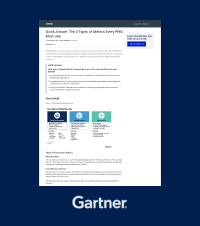10 project management trends for all PMOs in 2025

In the ever-changing world of project management, the Project Management Office (PMO) plays a key role. To ensure that companies recognize the value they bring to the overall success of the business, it is crucial to be aware of the Project Management trends trends that will be shaping the future of PMOs.
In this article, we will explore ten trends that will not only reflect the evolution of the PMO, but also position it as a key strategic asset for organizations.
TABLE OF CONTENTS
- The PMO as a strategic asset.
- Focus on products rather than projects.
- Leading business transformation.
- Linking projects and products metrics to business goals.
- The power of AI and automation technologies.
- Go beyond resource allocation.
- Establish a PMO ecosystem to get a holistic view of all PPM processes.
- Data customization.
- Embrace Hybrid and Agile Portfolio Management.
- Embrace PPM solutions to streamline all PMO processes.
1. The PMO as a strategic asset: the main trend for project management offices in 2025
The PMO can no longer be just a regulatory agent for projects and programs but must become a fundamental business asset of the company.
Historically, the main role of the Project Management Office has been to serve as a control and management body for projects, ensuring alignment with the standards and best practices in place in the organizations.

PMO MANAGEMENT
Unlock the full potential of your PMO
Discover how PMOs can leverage Triskell Software capabilities
However, the evolution of the business environment, combined with the increasing complexity of projects and products, has made it necessary to redefine the objectives of the PMO, which is now a key element in the formulation and execution of the company’s strategy.
This paradigm shift has several implications:
- The PMO must collaborate more closely with business leaders to ensure alignment of projects and products with strategic objectives. It must not only follow strategic guidelines but must actively participate in defining them.
- The PMO must also take a proactive role in identifying strategic opportunities and threats. It must become an attentive observer of the business environment, anticipating changes and adapting the portfolio of projects and products accordingly.
- More and more organizations are measuring PMO performance based not so much on its operational efficiency, but rather on its tangible contribution to strategic results. This implies that you must implement metrics and KPIs with which you can link the value delivered in each project, program or portfolio to the mission and vision of the business.
WEBINAR
Benefits of a PPM tool for the PMO
2. Focus on products rather than projects
Many organizations are shifting their approach to value delivery from projects to products. This evolution not only represents a response to changing market demands, but also implies a paradigm shift in how initiatives are planned, executed and assessed.
PMOs must now consider projects not as isolated entities with a beginning and an end, but as constantly evolving initiatives. This change not only reflects a deeper understanding of modern business realities, but also recognizes the need to offer flexible and adaptive solutions in an environment characterized by rapidly evolving customer and competitive expectations.
And, in this context, the role of the PMO goes beyond the mere supervision of projects and management processes. By adopting a product lifecycle perspective, the PMO must become the catalyst in the organization’s production ecosystem for continuous development, iterative improvement and ongoing delivery of value to customers.
In addition, since product management requires a more agile and customer-centric mindset, the PMO should be one of the main drivers of agile methodologies at all levels of the organization. Agile PMOs are more flexible and responsive to change, allowing the organization to quickly adjust its approach based on changing market needs.
SUBSCRIBE TO OUR NEWSLETTER
Get stories like this in your inbox
3. Leading business transformation
Many companies are facing 2025 as the year of change. And PMOs can play a decisive role in this new dynamic, as they can (and should) position themselves as an active leader in the integral process of business transformation.
And how can PMOs help in orchestrating this transformation? In many different ways:
- Actively participating in transformation initiatives, taking responsibility for leading and coordinating efforts to align the organization with changing market demands and customer expectations.
- Identifying opportunities for improvement and promoting innovation practices throughout the company to keep it at the forefront in an increasingly dynamic and competitive business environment.
- Collaborating closely with business leaders, project teams and key departments to facilitate the effective implementation of transformation initiatives.
- Fostering a culture of innovation and continuous improvement throughout the organization. This involves not only change management, but also facilitating the acceptance and adoption of new practices at all levels of the organization.
4. Linking projects and products metrics to business goals
As we mentioned in the first trend, PMOs are increasingly taking on a more strategic role in planning and managing organizations’ project and product portfolios. Success is no longer about meeting deadlines and budgets, but about ensuring that each initiative contributes directly to the overall mission and vision of the organization.
Metrics should capture value delivered, customer satisfaction and contribution to business growth
This shift involves not only a more holistic consideration and alignment with the company’s long-term objectives but also the development and implementation of specific metrics and KPIs that capture the value created, customer satisfaction and contribution to the sustainable growth of the organization.
It is a change of approach that, if well implemented, will bring enormous benefits to your organization, for example:
- Better decision making.
- A shared understanding of how each effort contributes to overall success will be created. .
- Increased flexibility in adapting PMO metrics as the organization’s strategic objectives evolve.
Take your PMO one step further with Triskell
Request a demo and discover how Triskell can be customized to address your specific challenges and empower your PMO to continuosly deliver value.
5. The power of AI and automation technologies
New technologies such as AI and automation are redefining the way PMOs make strategic decisions and optimize their management processes. The ability to analyze large volumes of data in real time gives PMOs full visibility into the performance of each initiative, enabling them to make informed decisions based on data rather than relying solely on intuition or subjective assessments.
Thanks to AI and its advanced algorithms, you will be able to predict trends, identify problems and bottlenecks in advance, and optimize processes and workflows. Artificial Intelligence will not only improve the PMO’s ability to anticipate and mitigate risks, but will also help you identify opportunities for continuous improvement or for more agile and adaptive decision making.
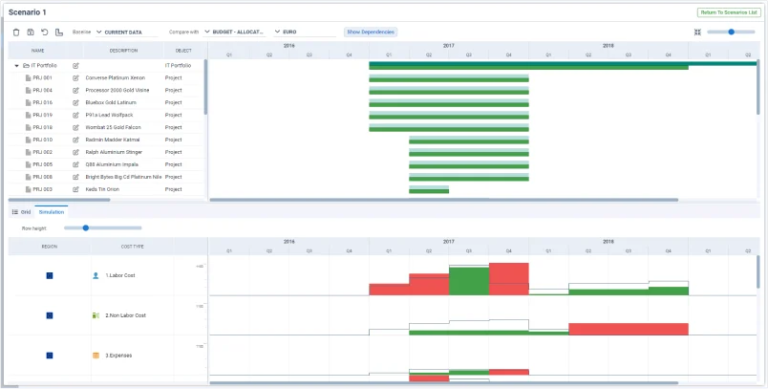
On the other hand, automation tools will improve your operational efficiency. You will be able to automate routine and repetitive tasks so that teams can focus on higher value activities. In addition, your resource allocation processes will be more efficient, as automation facilitates a more efficient and timely distribution of tasks, ensuring maximum productivity.
6. Go beyond resource allocation
The PMO should no longer focus on articulating processes for efficient resource management, but should go one step further. It must focus not only on allocating the right resources to the right initiatives at the right time, but also take some responsibility for developing and maintaining highly competent teams capable of adapting to the changing demands of the business landscape.
Capacity Planning should be a guiding light for many of the PMO’s strategic decisions
To achieve this, it is necessary to implement Capacity Planning processes. These will enable the PMO to anticipate future talent and skill needs, so that the organization is prepared to successfully meet emerging challenges and capitalize on new opportunities.
Capacity Planning will therefore be a strategic beacon of your PMO, as it will guide your decisions on issues such as:
- Identification of skills gaps.
- Resource allocation.
- The development of long-term growth strategies.
This process will also make resource allocation in the organization more agile. Project teams will be able to adapt quickly based on incoming demand. This implies not only an efficient allocation of skills, but also a greater ability to proactively identify and address emerging skills gaps.
WEBINAR
Expedite Resource and Capacity Management Analyses With Triskell
7. Establish a PMO ecosystem to get a holistic view of all PPM processes
Projects are no longer isolated entities but are interconnected. Therefore, effective management can no longer be limited to individual projects, but must extend to overall projects, programs and portfolios.
The PMO becomes the epicenter of this evolution, coordinating the planning and execution of projects and programs in a harmonious manner, thus ensuring that each initiative contributes to the overall strategic objectives.
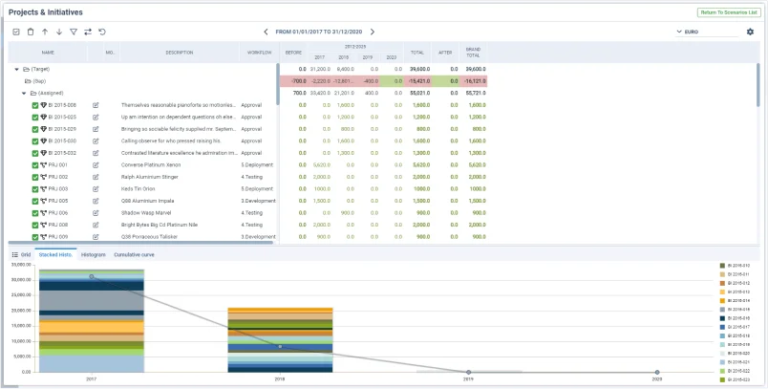
But in order for PMOs to obtain a holistic view of all Project Portfolio Management processes, several actions must be taken to achieve this:
- Identify and manage dependencies between projects and programs to proactively anticipate potential conflicts and mitigate risks, ensuring smooth execution and continuous delivery of value.
- Establish consistent practices and procedures at all levels of management to ensure effective implementation and reduce complexities that may arise from the diversity of projects and programs.
- Implement advanced data analytics technologies to enable PMOs to monitor and analyze project performance, resource usage and alignment with strategic objectives in real time.
8. Data customization
Data customization goes beyond mere reporting. It consists of tailoring information to the different needs of the organization, allowing project managers, teams and executives to access data relevant to their specific roles.
Reports should be tailored to the responsibilities and interests of each stakeholder
You must create reports and dashboards tailored to the responsibilities and objectives of each stakeholder. For example, while project leaders need detailed information on the progress, costs or risks of each project, executives will need dashboards that provide them with a more global and strategic view of project portfolios.
In addition, the information must also be accessible. The PMO must ensure that reports are understandable, which involves simplifying complex data and presenting reports or scenario analyses in a visually intuitive way.
9. Embrace Hybrid and Agile Portfolio Management
Not all projects can be managed in the same way. Flexibility is now key to optimizing the planning and execution of projects or products according to the nature of each one of them. Therefore, more and more PMOs are adopting agile methodologies to respond to this ever-changing business environment.
WHITE PAPER
Interfacing between Linear Waterfall and Agile Approaches
Those PMOs that embrace agility are not only adopting flexible, value-focused methodologies, they are also fostering a culture of collaboration and adaptability. With an agile PMO not only improves decision making, but also facilitates proactive identification of challenges and implementation of rapid adjustments.
But just because Agile is trendy doesn’t mean that all projects have to be managed this way. There are many types of projects that can still benefit from traditional methodologies. That’s why hybrid management methodologies are the best strategy to provide a more agile response to changing market dynamics.
10. Embrace PPM solutions to streamline all PMO processes
And finally, to put all these trends into practice and to drive operational efficiency in the Project Management Office, you must implement a PPM software. These platforms not only drive operational efficiency, but also strengthen the PMO’s ability to make decisions based on real-time data.

AGILE PORTFOLIO MANAGEMENT
Optimize your strategic decision-making processes with Triskell
Learn more about Triskell’s PPM software.
Benefits of Project Portfolio Management software:
- Visibility: with a PPM solution you will gain complete, real-time visibility of the entire project and product portfolios. This will not only improve coordination and collaboration between teams, but also facilitates the proactive identification of potential problems and the implementation of corrective strategies.
- Process automation: you will be able to streamline many of the routine and repetitive tasks of the PMO (such as resource allocation or reporting), freeing up time and resources for higher-value activities.
- Standardization of practices: With a PPM software, PMOs will be able to establish and enforce consistent practices at all levels of the organization. This will not only improve consistency in project execution, but also facilitate measurement and continuous process improvement based on real data.
- Data-driven decision making: Related to the previous point, PPM solutions not only provide static reports, but also offer analytical capabilities that allow the PMO to analyze trends, identify patterns and forecast results.
- Flexibility: the most cutting-edge PPM software on the market has the capacity to adapt to the changing needs of the organization, whether in terms of management methodologies or volume of projects to be managed.
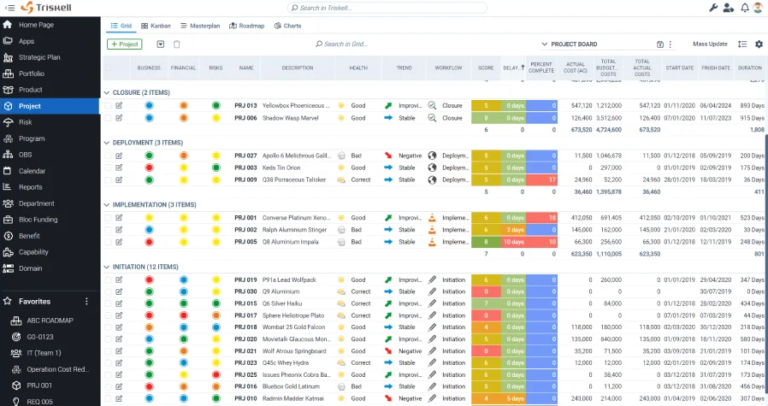
Conclusion: implement these trends in Project Management with Triskell
PMOs are positioning themselves now more than ever as a strategic driver for organizations. By embracing these trends, PMOs will not only adapt to a changing business environment, but also lead innovation and continued success. Preparing for these transformations is not only essential: it is the key to excelling in project management and product development in the next business era.
By adopting PPM solutions, such as those provided by Triskell Software, the PMO of the future will not only manage projects, but will shape strategy, lead transformation and become the epicenter of business excellence. The implementation of advanced technologies, the adoption of Agile and Hybrid methodologies, and the customization of data and reports are the foundations on which the PMO will build its path to sustainable success.
SUBSCRIBE TO OUR NEWSLETTER
Get stories like this in your inbox
Request a demo of Triskell Software
Do you think Triskell Software is the solution you need to take your organization’s resource management to excellence? If so, request a demo of Triskell.
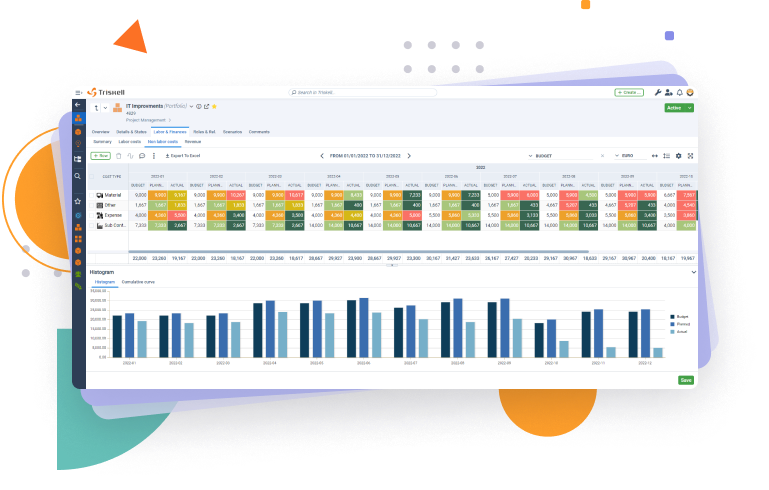
FAQs about Project Management trends
What are the benefits of adopting a hybrid project management approach?
The rise of hybrid project management is a key Project Management trend for PMOs. Here’s why adopting this approach can be beneficial:
- Increased Flexibility and Adaptability: Hybrid methods combine the structure of traditional project management with the agility of agile methodologies, a core tenet of modern Project Management trends. This allows PMOs to adjust plans as needed in response to changing requirements or unforeseen circumstances.
- Improved Responsiveness to Change: Traditional methods can struggle to adapt quickly to changes. Hybrid approaches, with their iterative development cycles and focus on continuous feedback, address a growing Project Management trend by enabling PMOs to react swiftly to modifications and ensure project success.
- Enhanced Risk Management: Traditional methodologies offer strong upfront risk identification processes. Agile practices emphasize ongoing risk assessment. A hybrid approach leverages both strengths, aligning with Project Management trends by allowing PMOs to proactively identify and mitigate risks throughout the project lifecycle.
- Better Resource Management: Traditional methods provide a structured framework for initial resource allocation. Agile approaches promote cross-functional teams and a focus on team member capacity. Hybrid methods combine these aspects, enabling PMOs to effectively allocate and optimize resources throughout the project, a crucial aspect of efficient Project Management trends.
How can PMOs integrate Project Portfolio Management (PPM) with the overall corporate strategy?
The blog post likely emphasizes the growing importance of aligning Project Portfolio Management (PPM) with the overall corporate strategy, a crucial PMO trend. Here’s how PMOs can achieve this:
- Strategic Prioritization: Focus on selecting projects that directly contribute to the organization’s vision and mission. This aligns with the PMO trend of ensuring portfolio alignment with strategic goals. Analyze how each project aligns with strategic objectives before adding them to the portfolio.
- Transparency and Communication: Ensure clear communication between PMOs, project managers, and executives. Regularly report on project progress and how each project contributes to strategic objectives.
- Portfolio Governance: Establish a governance framework to ensure alignment between project selection, execution, and strategic goals. This framework should define clear criteria for project selection, prioritization, and resource allocation.
What role does Ai play in the future of PMOs?
AI has the potential to revolutionize PMOs in several ways:
Predictive Analytics: AI can analyze historical data to predict project risks, resource bottlenecks, and potential delays. This allows PMOs to take proactive steps to mitigate issues and ensure smooth project execution, aligning with the Project Management trend of data-driven decision making.
Resource Optimization: AI can analyze team member skills, workload, and past performance to recommend optimal resource allocation for projects. This can help PMOs create high-performing teams and avoid resource conflicts, a growing Project Management trend.
Automated Reporting and Insights: AI can automate data collection and analysis, generating insightful reports on project performance and portfolio health. This frees up PMOs from manual tasks and allows them to focus on strategic decision-making,
How can PMOs establish a PMO ecosystem for a holistic view of PPM processes?
The blog post mentions the concept of a PMO ecosystem, a central hub for all project management activities, a significant PMO trend. Here’s how PMOs can establish one:
- Integrate Tools and Processes: Connect various project management tools—planning, collaboration, communication, reporting—into a central platform. This creates a single source of truth for project information, a key PMO trend for improved data visibility.
- Standardize Data Collection and Reporting: Ensure consistent data collection and reporting practices across all projects. This facilitates data analysis and allows PMOs to gain a holistic view of project health and portfolio performance, aligning with the PMO trend of data-driven portfolio management.
- Promote Collaboration and Knowledge Sharing: Create a platform for knowledge sharing and collaboration among project teams. This fosters a community of practice and leverages the collective experience of the organization, a growing PMO trend for improved project delivery.
- Develop a Strategy: Create a plan for allocating resources effectively. This might involve adjusting project timelines, hiring or training for skill gaps, or utilizing external resources strategically.
Related Content

CAPEX vs OPEX: strategies for managing budgeting in IT Projects
Learn about the impact of CAPEX and OPEX on IT project budgeting and discover best practices to manage them effectively in this guide.

The ultimate PMO guide: roles, responsibilities and best practices for successful implementation
Learn everything about PMOs: roles, responsibilities, and best practices for successful implementation. A must-read guide for project managers..
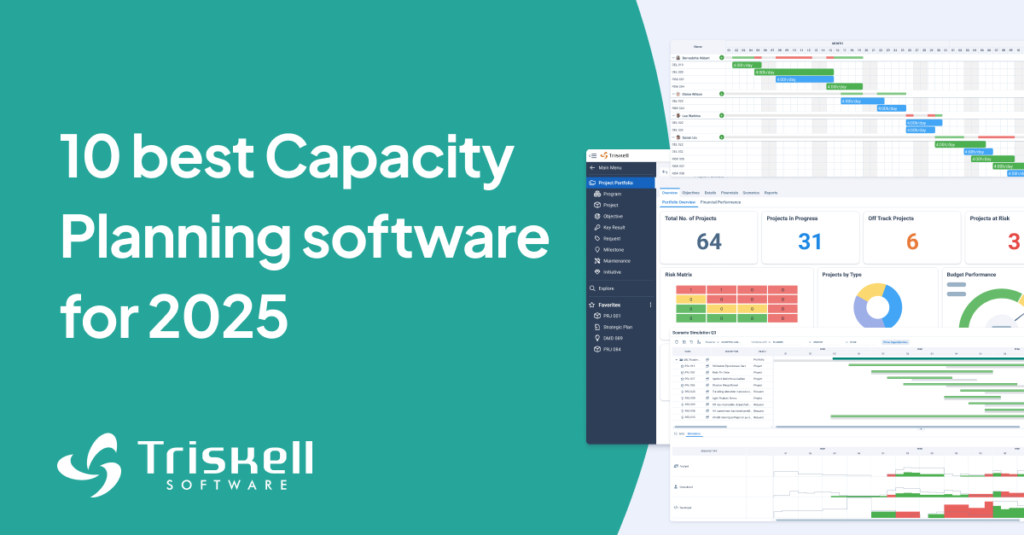
10 best Capacity Planning software & tools in 2025: the ultimate guide
Explore the top 10 capacity planning software and tools for PPM. Compare features, pricing, and find your best fit for your business.

